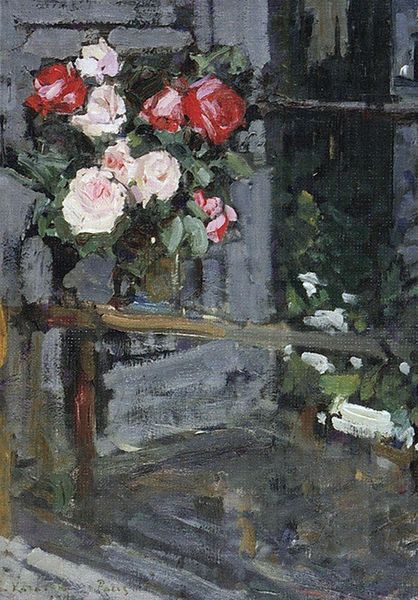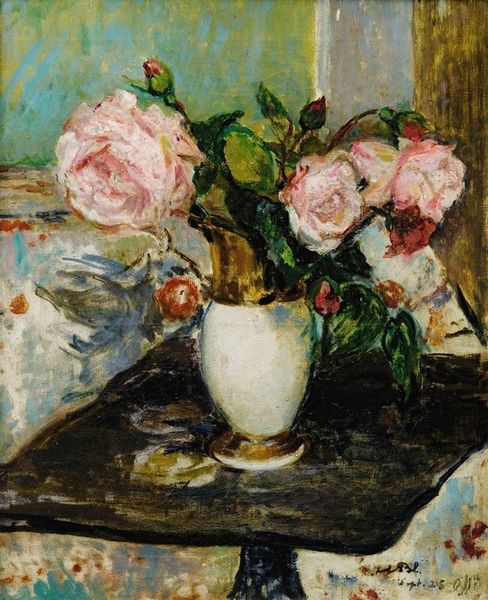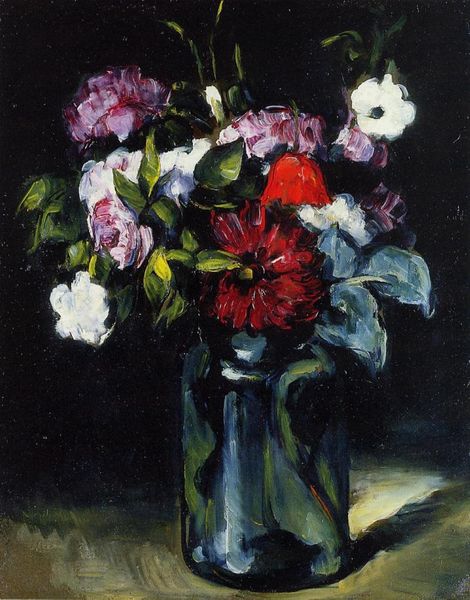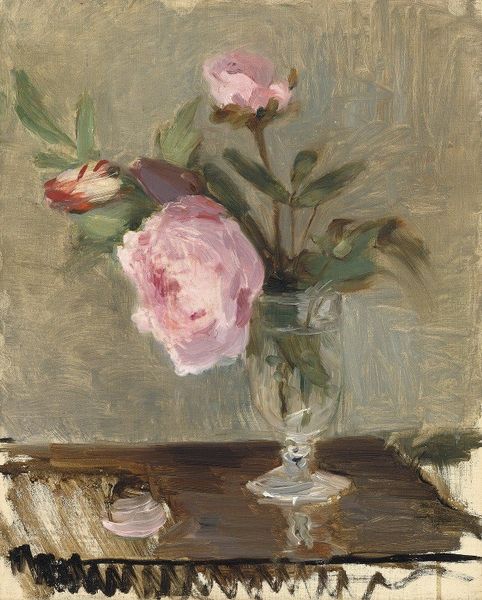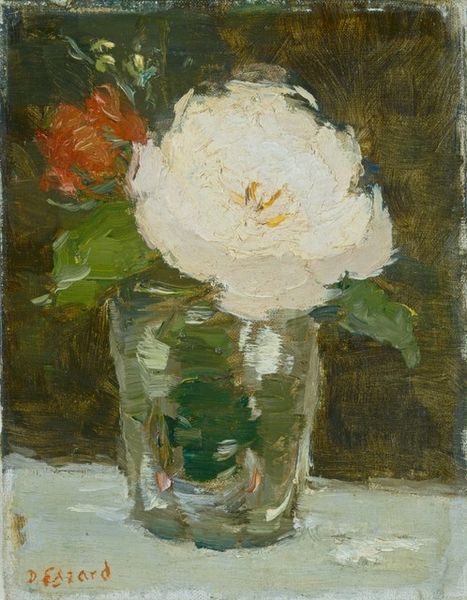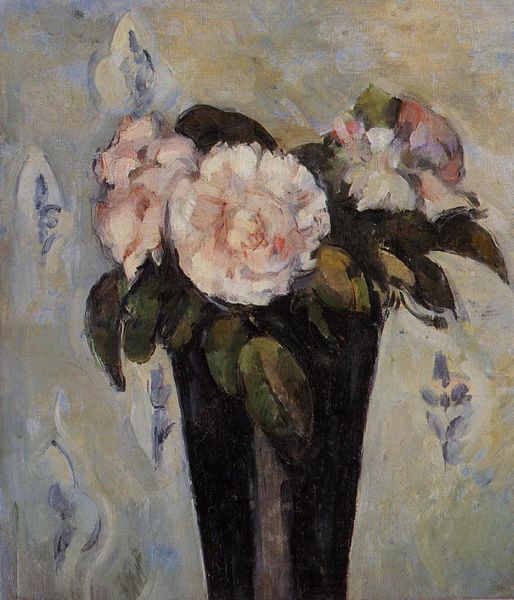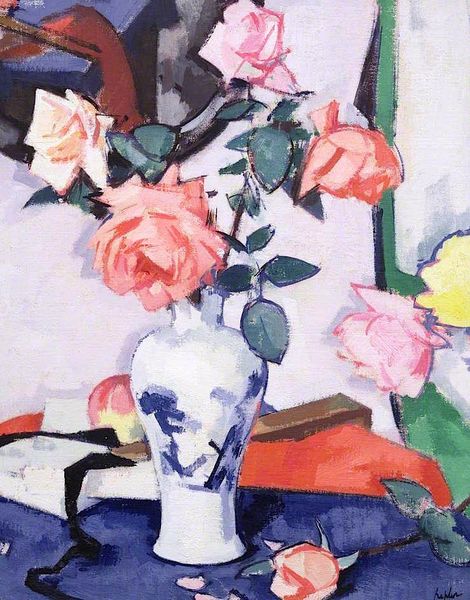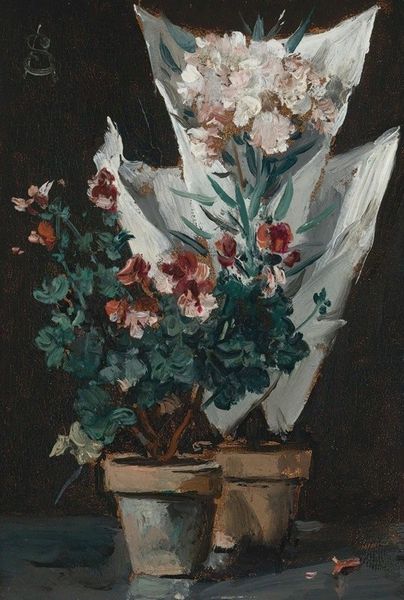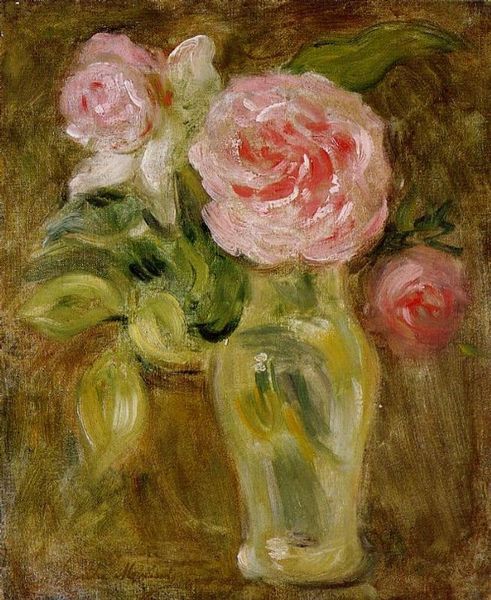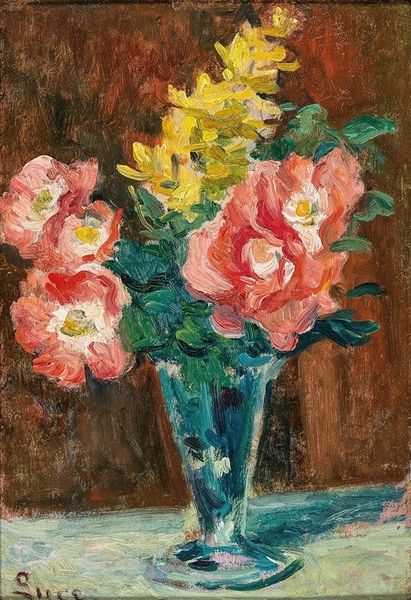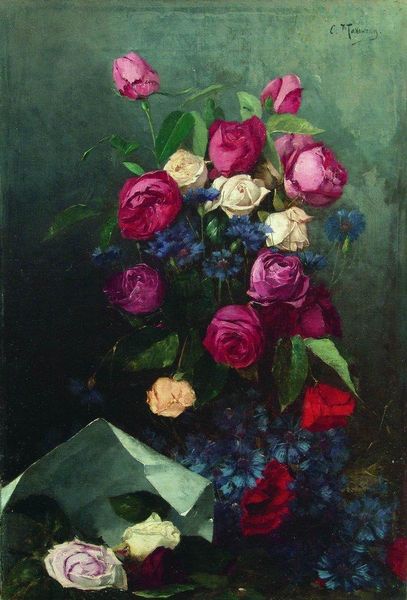
painting, oil-paint
#
painting
#
oil-paint
#
oil painting
#
intimism
#
scottish-colorists
#
post-impressionism
Copyright: Public domain
Editor: Here we have "Roses," an oil painting by Samuel Peploe. The deep black background makes the delicate pink roses really stand out. The brushstrokes seem so deliberate and highlight the physicality of the paint itself. What captures your attention most about this work? Curator: What interests me is considering Peploe’s labor and the broader material conditions of artistic production at the time. Oil paint, of course, isn't simply "there"— it requires a whole chain of extraction, manufacturing, distribution, and marketing. Looking at the thick, almost sculptural application of paint, I wonder about Peploe's access to these materials, his consumption patterns as an artist. Did he mix his own paints? Where did he source his pigments? Editor: That’s an interesting perspective. I was more focused on the Scottish Colourist movement, and how Peploe fits within that aesthetic. But I see your point; it’s about understanding the socio-economic framework in which he was operating. The luxury of accessing quality materials definitely played a role. Curator: Exactly! Consider the vases, too. Were they mass-produced items? Heirloom pieces? The context of these everyday objects speaks to the intersection of art and consumer culture. How does this knowledge alter our perception of the roses themselves, traditionally symbols of beauty and luxury? Editor: I never thought of it that way, but viewing the materials as commodities and considering the artist’s relationship to them provides a whole new lens for understanding not only the artwork but also its connection to the world around it. Curator: Precisely. And by understanding the materiality, labor, and modes of consumption intertwined with its creation, we gain a richer appreciation for its place in history.
Comments
No comments
Be the first to comment and join the conversation on the ultimate creative platform.
